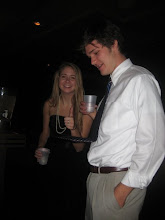 Jacob Riis realized that words could not fully convey reality, so he used photography to bring about reform. An immigrant from Denmark, he became a police reporter in the slums of New York during the 1870's and began a pioneering effort to document the scandalous conditions of his time. With explosive flash cartridges fired with a revolver, Riis illuminated the "unmerciful, claustrophobic life of destitution" and allowed the public a first glimpse at the poverty at their doorstep. His life was dedicated to bringing about what he called "social uplift."
Jacob Riis realized that words could not fully convey reality, so he used photography to bring about reform. An immigrant from Denmark, he became a police reporter in the slums of New York during the 1870's and began a pioneering effort to document the scandalous conditions of his time. With explosive flash cartridges fired with a revolver, Riis illuminated the "unmerciful, claustrophobic life of destitution" and allowed the public a first glimpse at the poverty at their doorstep. His life was dedicated to bringing about what he called "social uplift."This photo serves as a fantastic representation of Riis' mission. This photograph, taken in 1889 and included in his project titled How the Other Half Lives, depicts three "urchins" huddling for warmth in a window well. By capturing homeless and filthy children sleeping on the streets, he reached the collective consciousness of society and brought about reform. His message was this: No child should have to sleep outside.

It's worth adding that although Riis posed some of his subjects, this is not a staged photo. The boy on the left has splotches of snow on his hat and coat sleeve which even cast shadows. A chunk of ice, fallen from some overhanging structure, balances precariously on his wrist. If he were pretending to be asleep, he'd have felt this cold stuff and brushed it off. Instead, unconscious in his slumber, he left it where it fell on him.
ReplyDeleteIn an age when photo-manipulation techniques were primitive, such fine details couldn't have been added during processing. The evidence of extreme cold is real.
Besides having no decent place to sleep, these boys certainly owned no shoes. Since they were actually asleep, it wasn't a case of the photographer asking them to remove their shoes to increase the pathos of a posed picture. And they would have worn any available footwear rather than sleep outdoors barefoot in the frigid weather.